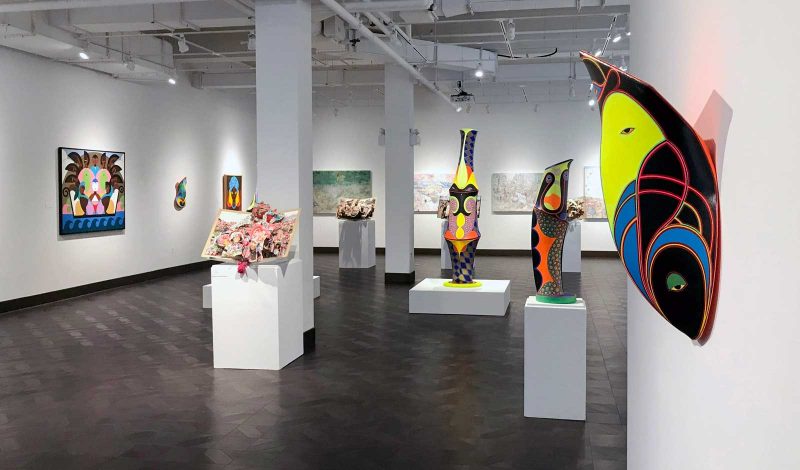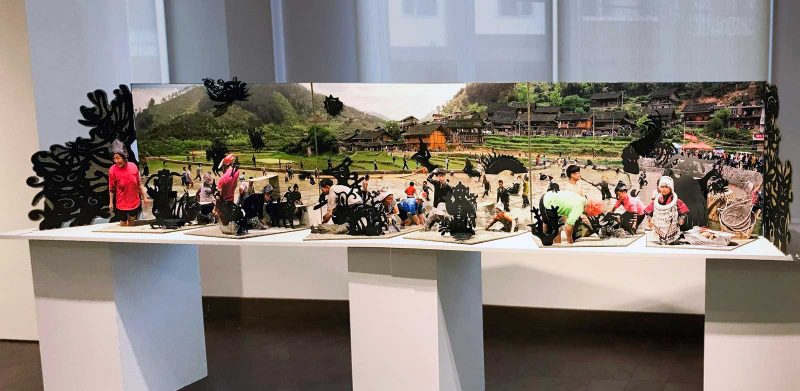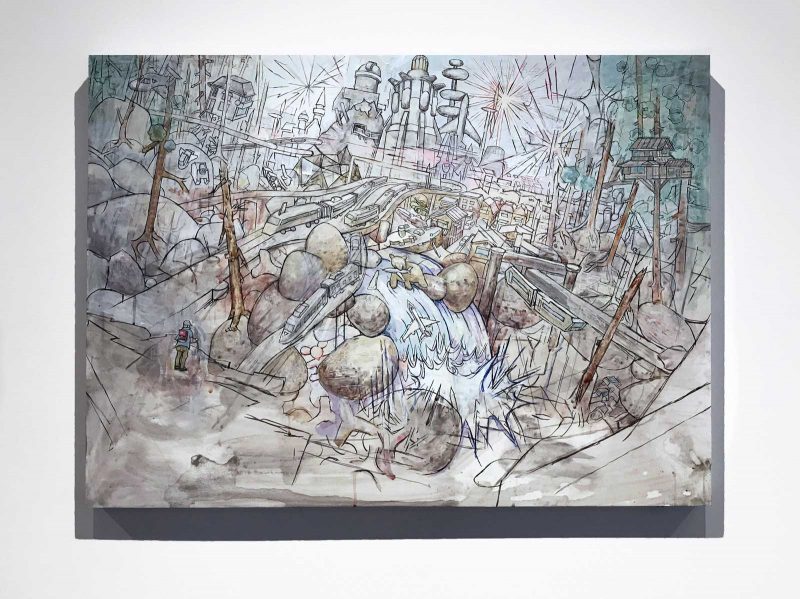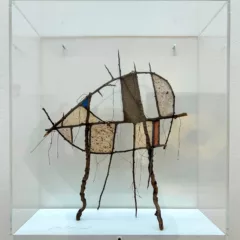
There is a difference between experiencing a work of art in person, and experiencing a digital representation of that work. The difference can range from negligible to profound, and it is impossible to appreciate unless you have an opportunity to see both the original work and its digital counterpart.
The virtual art world has expanded exponentially in the last decade as both public and private art institutions have digitized their exhibitions and collections and provided the public with web-based access to them. Because most of the art work that has ever been created is essentially inaccessible to the public, either because of distance, or because it is in storage or held privately, the digital world provides unprecedented avenues of accessibility to the world’s art.
Alas, at this moment in history, when much of the world, and practically all of the public art world, are physically shut down, there is little choice other than the virtual, the digital. And, as a result, institutions are further refining online access, with many impressive results. Rowan University Art Gallery’s online exhibition, Tracing Origins, is an excellent example.
Tracing Origins features the work of three Philadelphia-based artists: Colette Fu, Claes Gabriel, and Hiro Sakaguchi. Each of these artists has contributed work inspired by their ancestral homelands and native cultures – China, Haiti, and Japan, respectively. The exhibition includes installation shots, a video detailing the work of each artist (accompanied by dreamy instrumental soundtracks), interviews of the artists, numerous images of each piece in the show, and a comprehensive Exhibition Guide.
Colette Fu
Many of us have a tendency to think of the population of China as homogenous. Colette Fu suggests that even many Chinese are under the same impression. Yet there are scores of minority ethnic groups in the country. Fu, who grew up in the United States, and earned an MFA in Fine Art Photography from the Rochester Institute of Technology, has devoted much of her work to these overlooked peoples, to their places and to their cultures, and she has traced her own origins to one of them.
Fu creates incredible, fantastic, one-of-a-kind collapsible artist’s books which, to my mind, are really sculptures that combine her photography with remarkable paper engineering. You have to think far out of the box of pop-up books to conceive of her constructions. There are six of them in the show, and the photographs embedded upon each of them have been taken by Fu during her journeys to visit these overlooked peoples and places.
Each of the works combines multiple aspects of the landscapes, the cultures, the lives and rituals of largely unknown minority populations in China’s Yunnan Province. Yunnan is China’s most southwestern Province, and shares borders with Tibet, Burma, Laos, and Vietnam. Fu also has focused upon other peripheral areas of China including Xinjiang Province and the autonomous regions of Inner Mongolia and Guangxi.
Fu has traced her own origins to Yunnan Province. Her mother was born there. And while teaching at a university in the region, Fu learned that her great-grandfather, who was a member of the powerful black Yi tribe, helped establish the university where she was teaching and was the governor and general of Yunnan during the transitional years of WWII.
Each of Fu’s works becomes a chapter of discovery and celebration, as she explores and documents the worlds of her ancestors. While her technical virtuosity is something to behold, it is absolutely fascinating to join in her investigation into these far reaches of Chinese society.

Claes Gabriel
Haitian-born Claes Gabriel has lived in the United States since 1989, when he began his studies at the Maryland Institute College of Art. He has ten pieces in the exhibition.
Reminiscent of Frank Stella, Gabriel paints with brilliant, explosive colors, in acrylic, with sharp lines. His work includes two- and three-dimensional paintings — masks and statues which he ingeniously builds and calls shaped canvases.
Haiti was once a French slave colony, and throughout Gabriel’s work you can feel the influence and presence of African tribal paintings, totems, folklore, and mythology. Eyes peer out at the viewer, and they are suggestive, deep, spiritual, mystical. The work is electrical, and magnetic. The pieces seem to dance in front of you, each with its own Afro-Caribbean swing.
There is a subtle complexity to Gabriel’s work which adds depth and intensity to his vision, but which also begs various questions. How, one wonders, has the artist been influenced by Voodoo, the predominant religion of the country. How has he been influenced by the sweeping poverty of the country, exacerbated by disease, and by natural disaster, including the 2010 massive earthquake which killed and injured hundreds of thousands of Haitians. Where does the great hope that infuses Claes Gabriel’s work come from. You witness the same hope, by the way, in the work of his father, a well known Haitian painter who died in 1988.
Gabriel has said that he knows a piece is finished when he can bow to it. Experiencing his work, you are likely to want to bow to it as well.
Hiro Sakaguchi
Hiro Sakaguchi moved to the United States from Chiba City, Japan, just outside of Tokyo, in the 1990’s to study art at the University of the Arts and the Pennsylvania Academy of the Fine Arts. The exhibition includes four of his paintings, three drawings, and a series of painted BANDAi Model Kit Boxes. BANDAi is a Japanese toy maker which makes plastic model kits.
Sakaguchi’s work is filled with models, toys, and games from his childhood, balloons, floating houses, rubber duckies, spider webs, futuristic structures, mobiles, teddy bears, trains, roller coaster highways, juxtaposed with decimated trees, giant boulders that clutter cityscapes, fish out of water, battleships, aircraft crashed or captured in the jaws of bears, urban congestion, chaos. The only human in these paintings is a lone hiker on the periphery of the rubble who is about to enter into it. Still, the paintings, all densely packed, retain whimsical qualities which I think are suggested by the pastel palette Sakaguchi prefers. One painting even depicts a purely tranquil vision of urban life lying beneath a huge, friendly mobile.
Sakaguchi traces his origins with a mixture of dreamlike images from his childhood and visions of urban cataclysm. It is not clear to me what, if anything, he is suggesting about Japan, or perhaps about the United States, but it is not always a pretty picture.

We have written before about each of these demonstrably accomplished artists Colette Fu, Claes Gabriel, and Hiro Sakaguchi, and it is a pleasure to see their work exhibited together in Rowan’s finely curated online exhibition. Congratulations to Mary Salvante, Curator and Gallery and Exhibitions Program Director, Assistant Director Jillian Schley, and Rowan students LeAnn Carlson, who assembled the slideshow for the exhibit, and Nate Whyte, who created the soundtracks.
Take a virtual tour of “Tracing Origins” or watch interviews with artists Colette Fu, Claes Gabriel, and Hiro Sakaguchi on Rowan University Art Gallery’s Youtube page.









